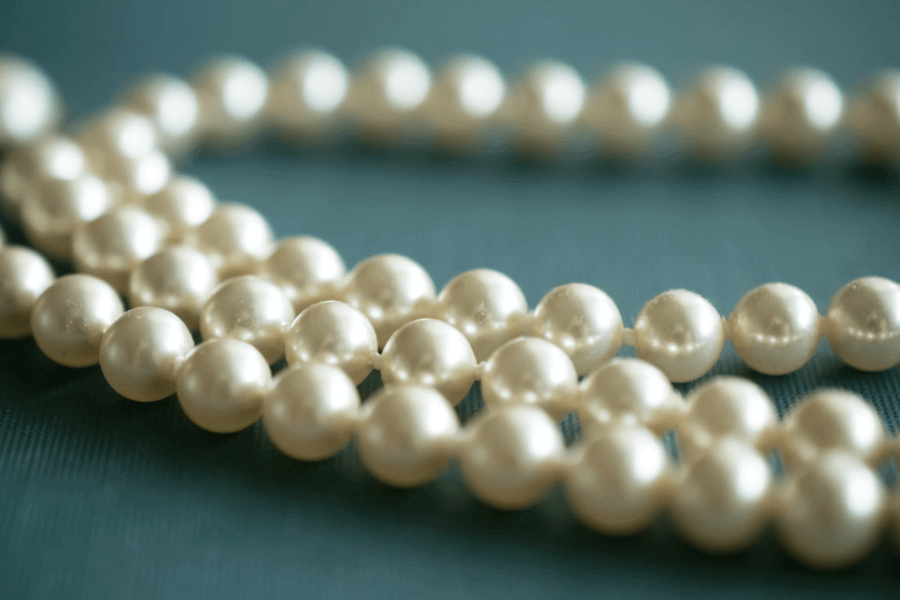The Pearl
A
A. The pearl has always had a special status in the rich and powerful all through the history. For instance, women from ancient Rome went to bed with pearls on them, so that they could remind themselves how wealthy they were after waking up. Pearls used to have more commercial value than diamonds until jewellers learnt to cut gems. In the eastern countries like Persia, ground pearl powders could be used as a medicine to cure anything including heart diseases and epilepsy.
B
B. Pearls can generally be divided into three categories: natural, cultured and imitation. When an irritant (such as a grain of sand) gets. inside a certain type of oyster, mussel, or clam, the mollusc will secrete a fluid as a means of defence to coat the irritant. Gradually, layers are accumulated around the irritant until a lustrous natural pearl is formed.
C
C. A cultured pearl undergoes the same process. There is only one difference between cultured pearls and natural ones: in cultured pearls, the irritant is a head called ‘mother of pearl’ and is placed in the oyster through surgical implantation. This results in much larger cores in cultivated pearls than those in natural pearls. As long as there are enough layersof nacre (the secreted fluid covering the irritant) to create a gorgeous, gem-quality pearl; the size of the nucleus wouldn’t make a difference to beauty or durability.
D
D. Pearls can come from both salt and freshwater sources. Typically, pearls from salt water usually have high quality, although several freshwater pearls are considered high in quality, too. In addition, freshwater pearls often have irregular shapes, with a puffed rice appearance. Nevertheless, it is the individual merits that determine the pearl’s value more than the sources of pearls. Saltwater pearl oysters are usually cultivated in protected lagoons or volcanic atolls, while most freshwater cultured pearls sold today come from China. There are a number of options for producing cultured pearls: use fresh water or sea water shells, transplant the graft into the mantle or into the gonad, add a spherical bead or do it nonbeaded.
E
E. No matter which method is used to get pearls, the process usually takes several years. Mussels must reach a mature age, which may take up almost three years, and then be transplanted an irritant. When the irritant is put in place, it takes approximately another three years for a pearl to reach its full size. Sometimes, the irritant may berejected. As a result, the pearl may be seriously deformed, or the oyster may directly die from such numerous complications as diseases. At the end of a 5- to 10-year circle, only half of the oysters may have made it through. Among the pearls that are actually produced in the end, only about 5% of them will be high-quality enough for the jewellery makers.
F
F. Imitation pearls are of another different story. The Island of Mallorca in Spain is renowned for its imitation pearl industry. In most cases, a bead is dipped into a solution made from fish scales. But this coating is quite thin and often wears off. One way to distinguish the imitation pearls is to have a bite on it. Fake pearls glide through your teeth, while the layers of nacre on the real pearls feel gritty.
G
G. Several factors are taken into account to evaluate a pearl: size, shape, Colour, the quality of surface and lustre. Generally, the three types of pearls come in such order (with the value decreasing): natural pearls, cultured pearls and imitation pearls (which basically arc worthless). For jewellers, one way to tell whether a pearl is natural or cultured is to send it to a gem lab and perform an X-ray on it. High-quality natural pearls are extremely rare. Japan’s Akoya pearls are one of the glossiest pearls out there, while the' south sea water of Australia is a cradle to bigger pearls.
H
H. Historically, the pearls with the highest quality around the globe are found in the Persian Gulf, particularly around Bahrain. These pearls have to be hand-harvested by divers with no advanced equipment. Unfortunately, when the large reserve of oil was discovered in the early 1930s, Persian Gulf’s natural pearl industry came to a sudden end because the contaminated water destroyed the once pristine pearls. In the present days, India probably has the largest stock of natural pearls. However, it is quite an irony that a large part of India’s slock of natural pearls are originally from Bahrain.
 Đối với dạng Matching Information, nên làm cuối cùng sau khi đã làm các dạng câu hỏi khác, vì lúc này bạn đã phần nào nắm được bố cục bài đọc
Đối với dạng Matching Information, nên làm cuối cùng sau khi đã làm các dạng câu hỏi khác, vì lúc này bạn đã phần nào nắm được bố cục bài đọc 

